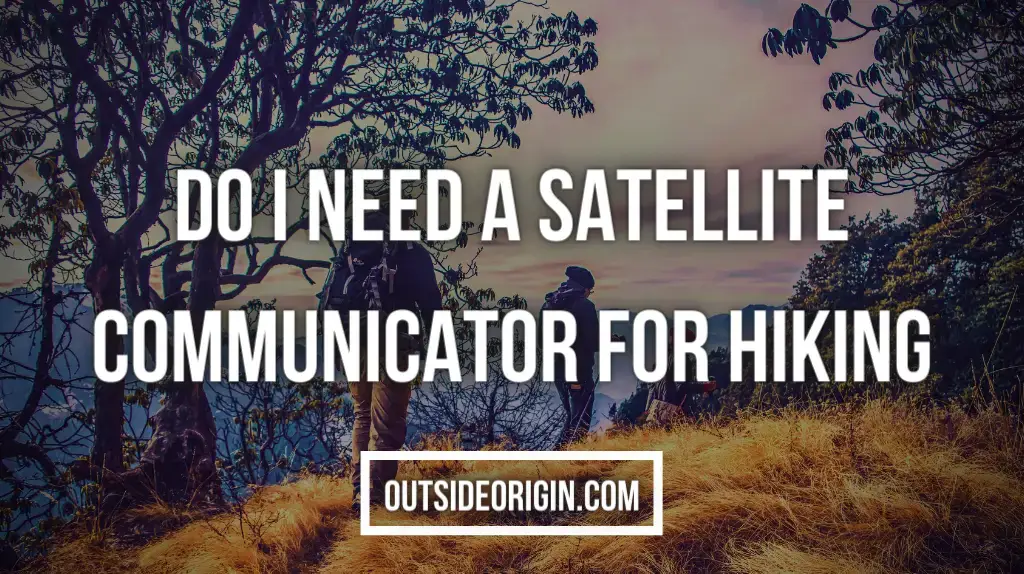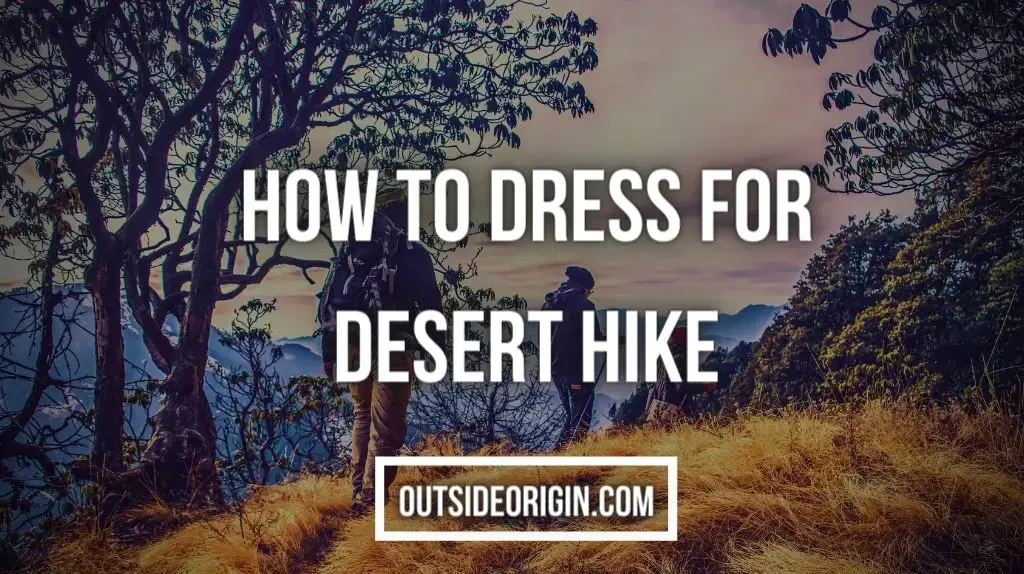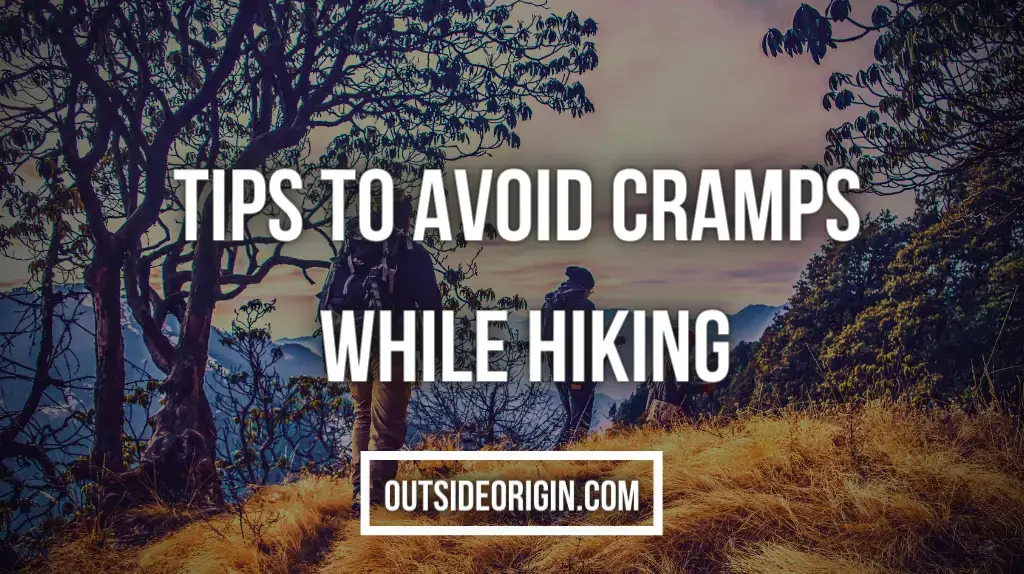Hikers’ satellite messengers appear to be a no-brainer at first glance. Who wouldn’t want a device that can get them out of a pickle on the go? But you already have a smartphone as a satellite messenger, don’t you?
If you’re not sure whether or not you can put your faith in your phone, consider these key questions:
- Do you always have a full battery when you go on a hike?
- Is there good cell phone reception where you’re going to be?
- Is it going to be accurate when you really need it (a little foreshadowing)?
- Is it possible to use your phone without worrying about it running out of battery power in the middle of a rainstorm?
Satellite messengers, which are much more than just hand-held devices, can be used to send an SOS for help in dangerous situations.
When it comes to backpacking equipment, personal preference, price range, and, of course, practicality all come into play. Despite the fact that backpacking is the most common form of low-cost travel, it is actually a transition from the self-discovery experience to a more long-distance and long-time version of it.
Whatever the destination or purpose of the trip, the best and most innovative gear is always required for comfort and safety, especially when taking into account the inherently unpredictable nature of travel. Backpacking is all about the adventure of discovery, and as such, safety should never be taken for granted.
Different Types Of Satellite Communication Devices
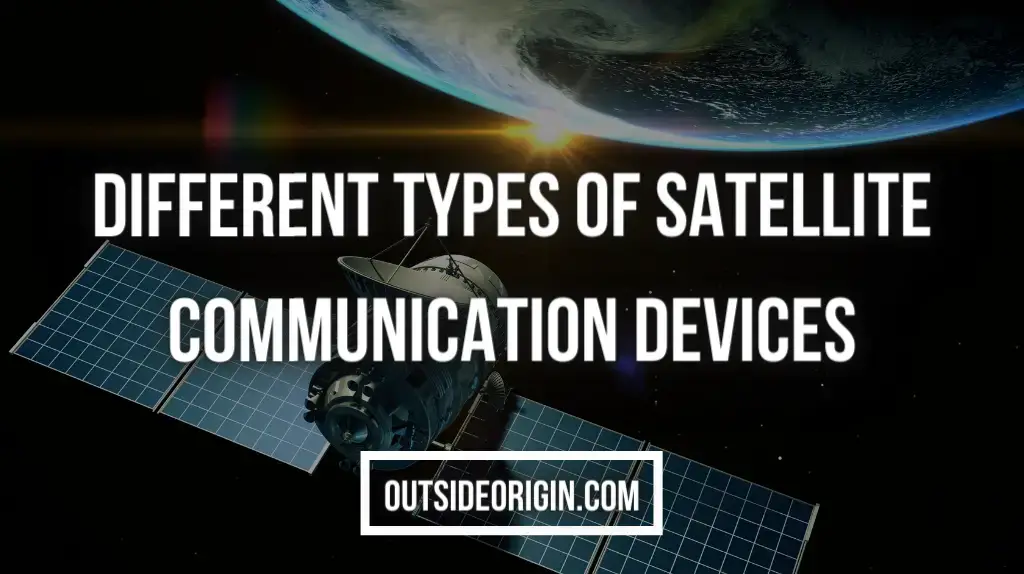
In general, there are three sorts of connections to satellites that can be made from the ground. Those who enjoy science and want to learn more about satellites should keep reading!
- Personal Locator Beacon (PLB), such as the ACR ResQLink, sends an emergency SOS beacon that is monitored around the world Once your message has been submitted, an emergency response team will be sent to your location. A PLB does not allow for back-and-forth communication. In addition, rescue operations can be exceedingly costly.
- Email and text messages can be exchanged with satellite messengers like the Garmin InReach Mini. Having two-way communication is essential in an emergency. You have the ability to provide medical staff with crucial information about your situation. Before assistance arrives, they can offer advice that can be put into action. An emergency SOS beacon, on the other hand, can be turned off, unlike a PLB.
- Using a satellite phone is the best way to stay in touch when trekking. You can make international direct calls just like you can with a cell phone. The details of the incident can be communicated to medical personnel immediately, with no lag time.
In addition, GoTenna and Beartooth connect to your phone, but they don’t communicate with satellites. Instead, they bear more resemblance to the old-fashioned walkie-talkie than anything else. Two-way radios that communicate on their own networks are what these devices are.
Should You Invest in a Satellite Messenger?
Think about how far away from civilization you plan to go and for how long before making a final decision. How much money are you willing to invest in this endeavor?
Hiking in remote areas like the Himalayas necessitates a device that can reliably send out an SOS signal no matter what happens. Alternatively, if you’re only going to Kathmandu for a few days and don’t intend to venture too far from civilization, you may only require a way to save money on your cell phone bill, such as a foreign SIM card.
If you’re trying to stay in touch with a friend who’s accompanying you on your trip, or with someone (or multiple people) back home, the math changes.
Unlike a Personal Locator Beacon, which acts as a panic button, satellite emergency notification devices (SEND) send alerts via satellite.
Benefits Of Satellite Communicators
- It’s simple to operate and doesn’t require any special training. It’s worth its weight in gold since you won’t use it if the buttons are confusing or if you have to know a lot of technical facts each time you switch it on.
- Due to its extensive field testing, Satellite Communicators are highly reliable. Hiking along, you don’t want to be thinking that your messages have been delivered, when they have not. However, the dependability of the results is location-dependent, so yours may differ.
- The Bluetooth connectivity on your phone can make it easier for you to send texts.
- There are 14 pre-written messages that you can use, or you can send an SOS.
- You don’t have to rely on spotty cell phone coverage to send text messages to family and friends back home.
- If you give them access to your GPS coordinates, they can keep track of your progress and, in the event of an emergency, alert search and rescue officials.
- Until you add the fully charged lithium batteries, this device weighs just 7 ounces (240 hours of operation).
Don’t buy a SPOT without doing your own research, reading reviews, and knowing exactly what you’re getting yourself into. Using a SPOT requires an extra SPOT Service Plan, so keep that in mind when comparing devices.
Drawbacks Of Satellite Messengers
1. Using a satellite communicator isn’t exactly cheap
It is up to you to decide whether or not the expense is justified in light of your personal hiking preferences. To participate, you must fork over money. That is to say, your hiking budget should include a monthly or annual subscription price, as well as any necessary setup or activation charges.
It makes sense to pay an annual fee if you’re a regular hiker. Otherwise, you should opt for a data package with a reasonable monthly charge or usage cap. Before sending or receiving a message, you’ll need a clear view of the sky.
2. Hiking in thick forests or rocky canyons is out of the question without a GPS gadget.
When the satellites acquire signals, time gaps between “send” and “receive” can occur, reducing the usefulness of messages when time is of the importance.
3. No problem if you’re only sending in a weekly report while you’re hiking the PCT.
Your ability to reach satellites and the intensity of the signal may prevent messages from being sent.
4. People who are expecting a “everything is well” message will be stressed, which is the exact reverse of what you intended.
As a result, you may get a false sense of security, thinking assistance will arrive soon, even if it does not (yet).
5. As not all of these gadgets can perform everything described above, you’ll need to do some serious study before choosing one.
Identify your top priorities and then choose the item that best fulfills them:
- Messages
- Tracking
- Rescue
Important Terms To Know While Hiking With A Satellite Communicator
Satellite networks: Globalstar and Iridium are the two main satellite networks that North American users should be aware of. This is the only network that comes close to being really worldwide. That doesn’t imply it will work everywhere, but if you plan to travel to the extreme ends of either pole or sections of central Asia and Africa—or northern Alaska, for that matter—it’s a better bet than a regular plane ticket.
Mesh: You know how your Wi-Fi network has a limited range, but you can extend it by adding a repeater? This is a mesh network. The network’s range can be further extended by piggybacking on existing cell towers and adding more repeaters. Imagining a daisy-chain of these repeaters strung across an entire mountain, providing coverage far into the wilderness, is how mesh works in the real world.
Tracking: Send an automated GPS waypoint to another device or an email address to keep track of the device. A link to a map showing your exact location can be clicked by anyone who receives the message, whether it’s a friend, family member, or a loved one. If you’re going to embark on a multi-day fat-biking adventure in southern Utah, or if you’re about to embark on a crux pitch of a climb, you might want to consider this. Tracking updates can be sent at the press of a button or set to leave a virtual breadcrumb trail at pre-specified intervals.
Offline Maps: Using an offline map that you download via an app on your phone, these gadgets provide you with a breadcrumb trail of your journey. However, the clarity and fine granularity of detail are nowhere like that of a quality paper 7.5-minute topographic map, certain standalone GPS systems, or apps like Viewranger. Offline maps do include enough significant geographic characteristics to facilitate basic navigation, but don’t expect to find out exactly which sport route is the 5.10 by them unless you’re traveling through a featureless desertscape.
If you’re wondering, “Who’s Texting Me?” it’s crucial to realize that none of these gadgets, even those that pair with your phone, really use your phone number to send messages. If you want to offer assistance or even just say hello to someone, you’ll need their cell phone number. Before you leave, you’ll need to set up a contact list on the phone’s address book.
Service Contract: This is the Service Agreement. Activation fees, service contracts, and the like are commonplace on these smartphones, just like with large telecoms. For each gadget, we’ll go over what you can expect to pay, as your budget — or lack thereof — may influence your decision on which item is most essential.
SOS Button: These devices may have a specific SOS button that sends your location to authorities. A gadget lacking this output is not an emergency beacon because it cannot notify others or authorities that you are in danger without being tethered. It’s a life or death situation. Remember why you’re making this purchase: if it’s for emergencies, you need the SOS button, no question about it.
How Do Satellite Communicators Work?
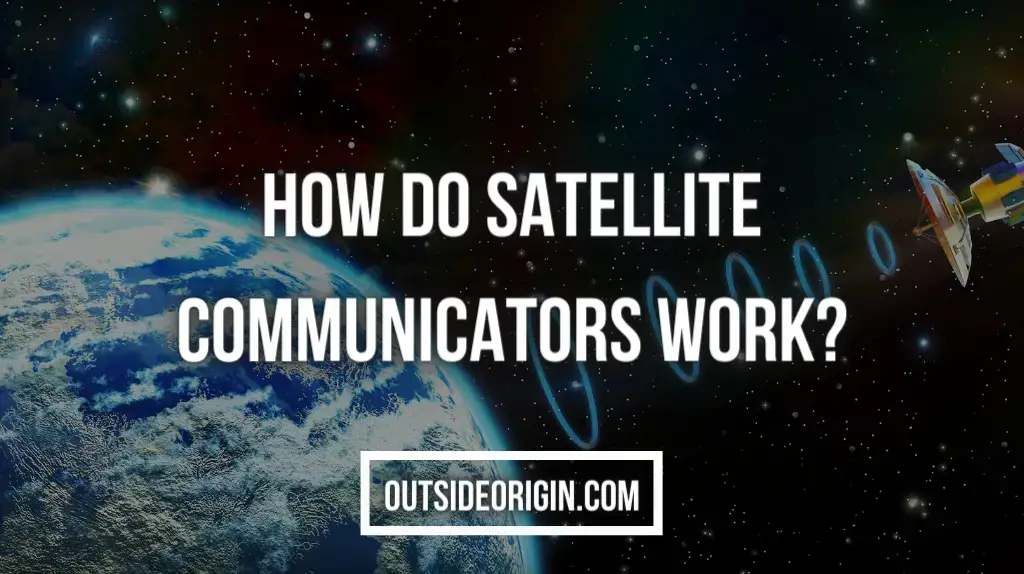
In order to select the best satellite communications gear for hiking, the first step is to decide on the sort of connection you want to utilize.
Cellular, as well as satellite networks, can be used to make and receive phone calls and access the internet. The service provider’s capacity to connect determines which one to utilize.
If it can’t connect, even the most expensive gadget isn’t worth anything. As a result, connectivity is a must. Line-of-sight signal transmission is essential for network proximity. Here are some of the most prevalent ones. Some of the available options are:
- Cell Tower
- Thuraya
- Inmarsat
- Iridium
- Globalstar
- COSPAS-SARSAT
Difference Between GPS & Satellite Communication Devices
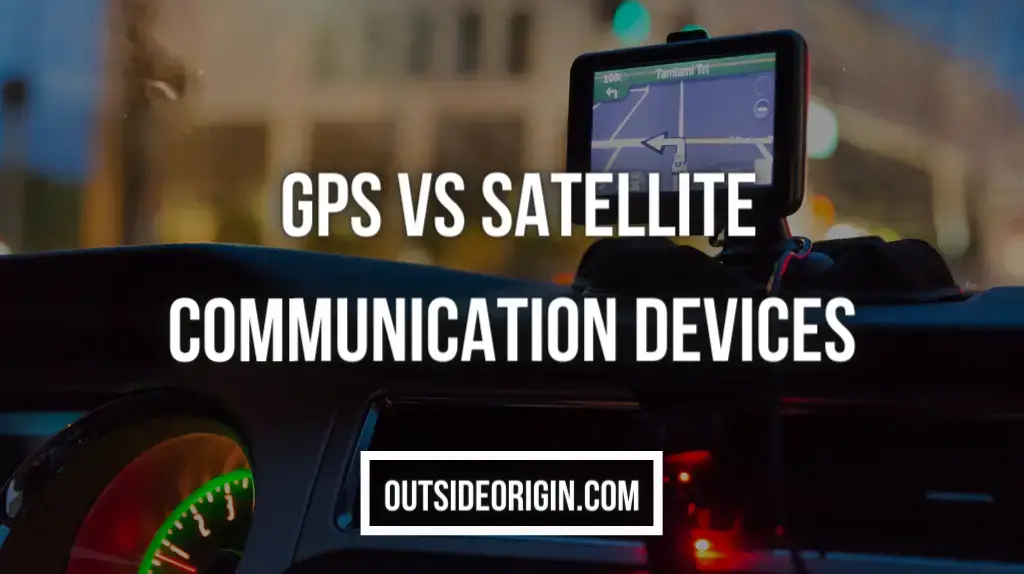
It’s impossible for GPS to communicate with other individuals by electronic means like a text message or email. To help you find your way around, they only show your location on a map with nearby mountains, lakes, and trails.
On the other hand, devices like satellite messengers, personal locating beacons, and satellite phones can transmit messages. Some people prefer to communicate via text message or email, while others prefer to use the phone. Using a personal locating beacon alerts the appropriate authorities that you’re in need of assistance.
The distinction between a GPS and a satellite message is becoming increasingly blurred. Delorme’s inReach Explorer+ and SE+ both include a GPS and a satellite messenger. In the intervening years, Garmin purchased them and improved their GPS capabilities.
To use a GPS, you need to know where you are going and how to get there. GPS tracks and breadcrumb trails can be created with these devices and shared with others after the hike.
If they don’t have a satellite messenger built-in, they won’t be able to help you get rescued as the messengers do. Satellite messengers, satellite phones, and personal locating beacons are all methods of communicating with the outside world that can aid in your rescue.
How To Choose The Appropriate Satellite Communication Device?
Carrying a hiking communication gadget is something that is entirely up to you to do. Your willingness to take risks plays a large role. For ultralight trekkers and thrill-seekers, technological devices may be unnecessary.
In the event of an emergency, they’d rather rely on infrequent meetings with other hikers. Personal Locator Beacons, for example, maybe avoided.
If you’re going on a hike in an area with mobile coverage, your first port of call should be a cell phone. Carrying one of the other technological devices may be necessary. However, it isn’t necessary.
Hiking or backpacking in an area without phone service necessitates the use of a different mode of transportation. A PLB is the simplest basic emergency device. Units are the only upfront expense. We don’t charge you anything for the service. Although you can cancel an emergency signal once it has been sent, you cannot do so after it has been transmitted. SAR operations might cost thousands of dollars to carry out.
Choosing between a satellite messenger and a satellite phone is a matter of personal preference and risk-taking ability. If you want your family to know where you are, a satellite messenger is a good option. Any difficulties you encounter while traveling can be communicated to them.
You can reach out to someone on your contact list via email or text message in an emergency. Additionally, a satellite messenger has a lower initial outlay than a satellite phone. Expenses on a regular basis can also be managed. When you don’t utilize your satellite service, you can cancel your monthly expenses.
Satellite phones can come in handy while you’re out in the woods, whether you’re hiking or backpacking. In an emergency, the price is well worth it. If you can afford the per-minute rates, it’s well worth it. In a fraction of the time, a phone call accomplishes far more than a letter.
Unlike texting or emailing, there isn’t the back-and-forth aggravation. Because of this, knowing that you have the option to make a phone call gives you a feeling of security. You have confidence in your ability to deal with any situation as it happens.
Conclusion: Final Thoughts!
Nowadays, we’re so reliant on mobile devices that even a brief loss of connectivity can leave us feeling like lost pups. Even while the coverage in many American national parks has improved recently, you should not assume that you will always have a signal.
You should always have a map and compass with you, and you should know how to use them before setting off. Using a locator beacon and a satellite messenger can also be very helpful. Also, don’t forget to bring a battery charger with you! There is no use in risking your phone dying in the middle of nowhere even if it does work.
Finally, have fun and stay safe! If you’re an older hiker, your primary concern should be your own safety. Assume that there will be no difficulties on any outdoor excursion. However, be prepared for anything. Prepare for the unexpected by taking a trustworthy trekking communication device with you.
Can You Do Me A Small Favor?
We have put a lot of time & effort into writing this post to provide you with the best info out there.
It’ll help us out if you could consider sharing it on your social media networks. You are also allowed to take any photo you want from our blog as long as you credit and link back!
Appreciate it! ❤️️
I am Jordan James, I am a writer and researcher over here at Outside Origin. I love spending time in nature and just being outside. I have hiked many trails such as the Appalachian Trail, Pennine Way, Half Dome to name a few.

